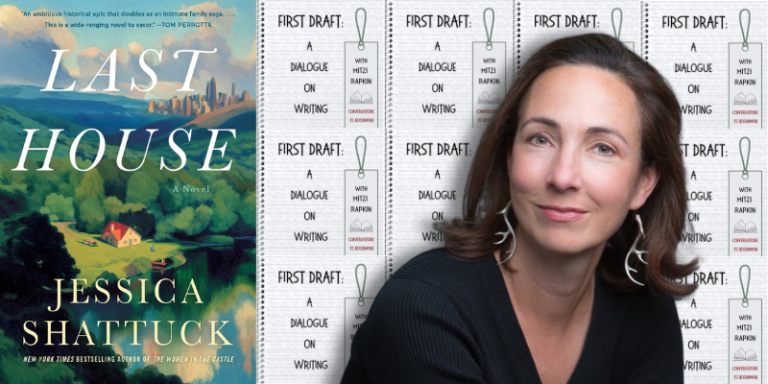
is a weekly show featuring in-depth interviews with fiction, nonfiction, essay writers, and poets, highlighting the voices of writers as they discuss their work, their craft, and the literary arts. Hosted by Mitzi Rapkin, celebrates creative writing and the individuals who are dedicated to bringing their carefully chosen words to print as well as the impact writers have on the world we live in. In this episode, Mitzi talks to Jessica Shattuck about her new novel, .
When you’re crafting a novel that covers many decades, and you know that you need to slowly establish character, and especially earlier in a novel you have to help a reader understand the connections to the choices that the characters might make later. So, in some ways, you have to know what choices they’re going to make and move towards that. So, I’m curious, in the big picture, how you think about this.

How does that work for you? I wish I was a writer who wrote from an outline, but I have a very messy process. What I do tend to do is have certain points that I’m writing toward. So, I know certain things are going to happen.
Sometimes it’s even as simple as a scene that I know I’m writing toward. It doesn’t have to be a really big thing. Sometimes it’s a big plot event, but sometimes it’s like in the book they are going to go to the Shah’s party in 1971 and they are going to be horrified by the excess and over the top elements of it.
So, there are things that I’m kind of writing toward, and I’m finding my way, and it’s just kind of like a river running downstream and I have to sort of move around and see here are some rocks and go around this way and that way. But I do a lot of revising. Certainly, once I’ve got the first shape of that path and it is sort of general from here to there, then I’ll go back, and I’ll fill things in.
I’ll read it over and think, I want to do something here on page 40 that is going to set up something that’s going to happen later on page 200 so it’s certainly not a linear process. *** is The New York Times Bestselling author of the novels , a New York Times Bestseller, #1 Indie Next Pick, and winner of The New England Book Award; , and , which was a New York Times Notable Book, a Boston Globe Editor’s Choice Best Book of the Year, and a finalist for the 2003 PEN/Winship Award. Her fiction has appeared in The New Yorker, Guernica, Glamour, Open City, and The Tampa Review among other publications.
She lives in Massachusetts with her husband and three children..










